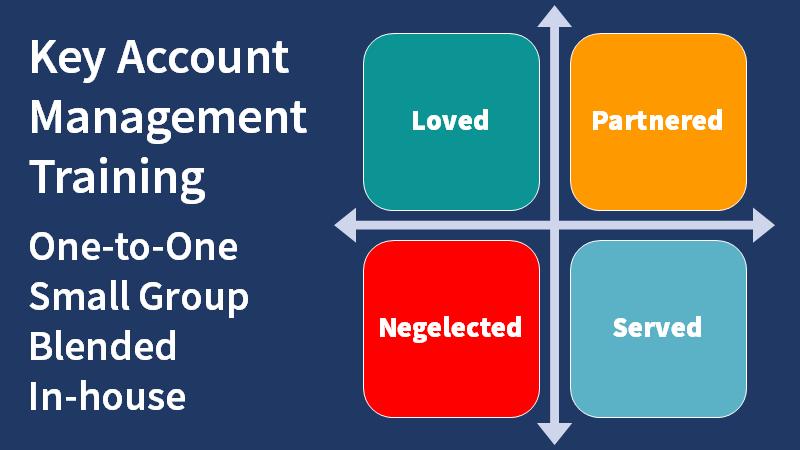Lateral thinking strategies for sales problem solving.

Creative thinking types are often pictured in offices with odd decorations littered with unusual ornaments and toys. They are seen as people with unconventional tastes in clothes and jewellery. In fact, we are all creative. Sales problem solving is what the job is about. Salespeople help solve customer problems.
People speak about 7000 words a day. You may be surprised to learn that on average, this includes over 70 completely unique sentences. So if you are only average, you invent around 70 completely original sentences every day!
Belief has a lot to do with problem solving ability. Placebos, pills that contain no drugs, have been shown to help cure medical conditions just because the patient has been led to believe in the treatment.
Past experience of successful sales problem solving sets our unconscious expectation of competence. If we believe we can, we do.
Sounds too simple doesn't it?
If you associate problems with failure you are sabotaging your ability to come up with creative answers.
Sales Problem Solving Strategies
You have probably heard the phrase; 'problems are opportunities'. The truth in this statement is not much help when you can't find a way to resolve something. Here are some specific techniques that help:
1. Reverse the Question
Suppose you can't think of a good reason to get back in front of a prospect who is about to make a decision. Ask yourself "What reasons could I give to avoid speaking with them if they called me?"
All kinds of excuses will occur to you. Pursue them and see where they lead.
Amongst your ideas will be just the reason for talking to them that you are looking for.
2. Mentor
Call to mind the most successful salesperson, business leader or entrepreneur you know. Imagine yourself in their presence, asking their advice. What would they suggest?
If you don't know any extraordinary salespeople, imagine someone who fits this description. It works just as well.
3. Brainstorm
Write your sales problem at the top of a piece of paper. Underneath write every possible solution that occurs to you. Make sure you include any silly or impractical thoughts. Don't stop to consider them, just keep going until you have at least twenty-five.
Don't worry if none of them makes sense.
Put your list to one side until the following day. Then repeat the process. If you need to, refer to yesterday’s list for inspiration.
It seldom takes more than a day or two before you discover just the idea you need.
4. Brainstorm in a Group
Even working with one other person can rapidly accelerate the process. Brainstorming seems to work best when between five to eight people work together.
First, write your sales problem or challenge at the top of a flip chart. Have one of your colleagues write down everyone’s contributions. Pick someone who can write quickly, so that they don't interrupt the process in trying to keep up.
Remember to explain the first rule of brainstorming – no criticism of any ideas. All suggestions are acceptable. Enforce this rule rigorously.
If you have five or more people try for 100 ideas. For some strange unfathomable reason, the best idea is usually about the seventieth.
5. Mind Map
Start with a blank sheet of paper. Draw an image that represents your topic or challenge in the centre.
If you can't think of a good picture, write it and put a circle around it.
Identify the main possibilities and draw branches for each theme.
Write identifying phrases or descriptions along the branches. Use sub-branches to identify subordinate or related thoughts. Draw pictures to represent your thoughts. This way you stimulate your visual thinking, which helps you to come up with more ideas. It doesn't matter if your pictures have artistic merit. They don't have to make sense to anyone but you.
Use different colours to further stimulate your visual creativity. The act of drawing a mind map prompts additional thoughts and alternatives.
Repeating the exercise, just to tidy up your map, will lead you to think of still more ideas.
6. Dictionary
Select a word at random from a dictionary. Think about the word and ask yourself, ‘How does this word apply to my topic or challenge?’. Think of solutions that relate to the word.

Edward De Bono, the famous scientist who has spent a lifetime studying how people think, invented this method and used it to help Sony design innovative televisions. Using his dictionary association method, he selected a word at random and practised this lateral thinking strategy using the word as a starting point. Apparently, it was this approach that led to the picture-in-picture feature that Sony used to differentiate their television sets.
The randomly selected word was ‘cheese’ which led to thinking about cheese with holes in it and from there it is a simple lateral hop to imagine pictures inside pictures.
Try these methods for sales problem solving and see which are the most effective for you. "No problem can withstand the assault of sustained thinking," wrote Voltaire.
Article by Clive Miller
If you need to improve sales problem solving or find creative thinking strategies to address sales obstacles, we can help. Telephone +44 (0)1392 851500. We will be pleased to discuss your needs or talk through some options. Alternatively, Send an email to custserv@salessense.co.uk for a prompt reply or use the contact form here.












